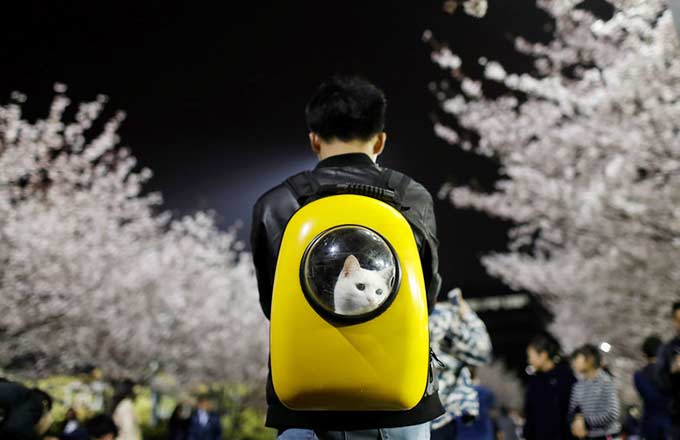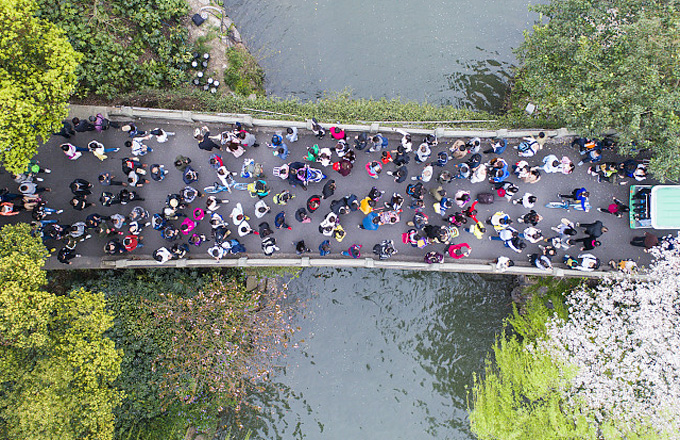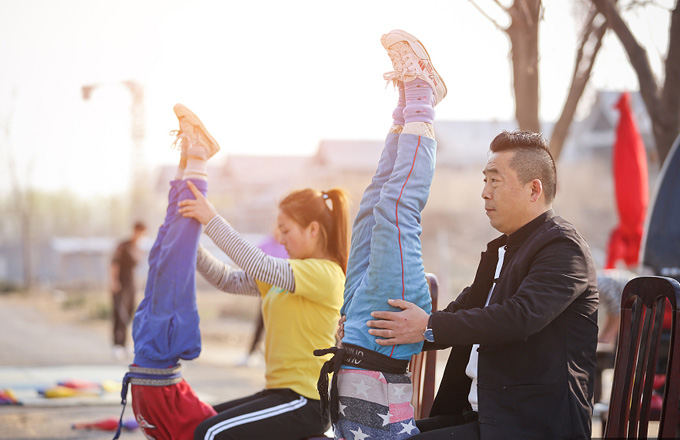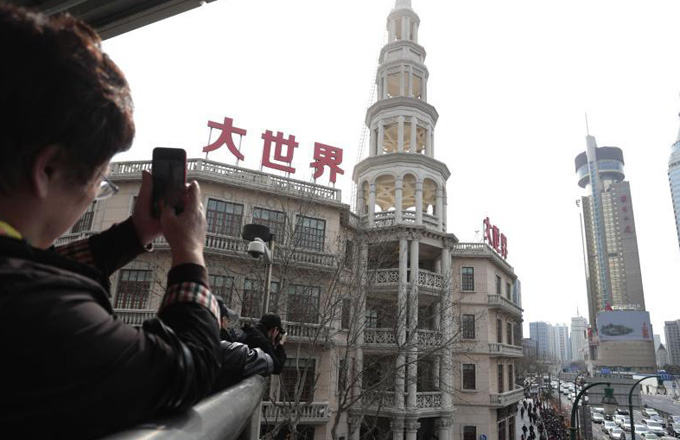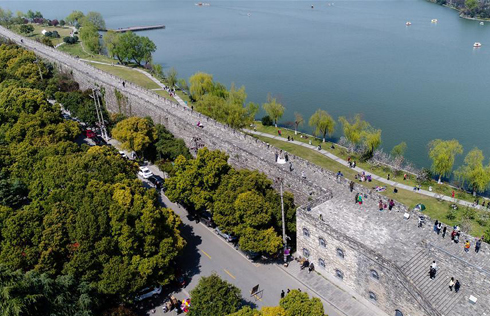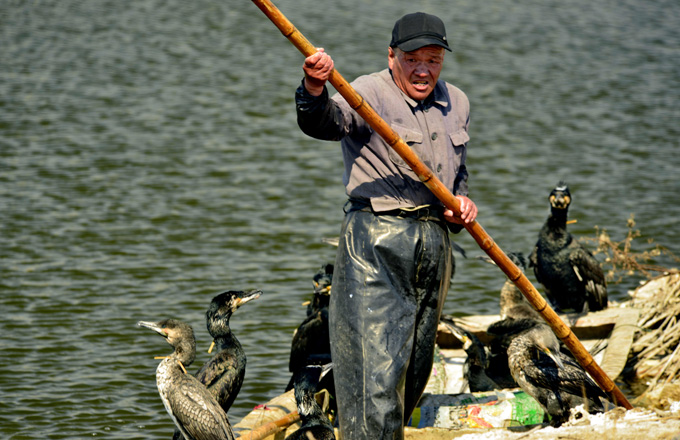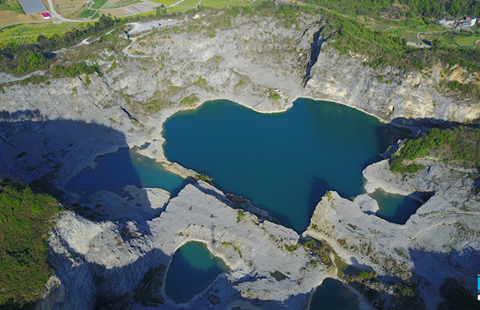

Dujiangyan has gone from being among the Wenchuan quake zone's most devastated cities to one of its best-restored.
Yan Ke and his new wife laughed and cheered as they flew a kite in a spacious public park in Dujiangyan, a city famous for China's oldest irrigation system, Taoism and pandas.
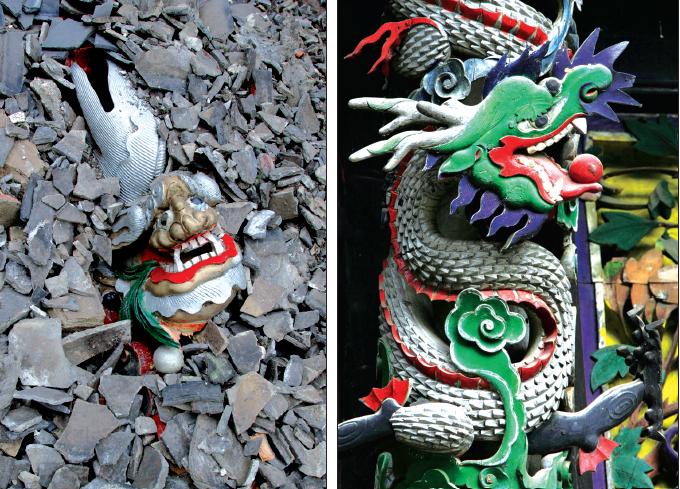 |
|
A dragon's head was all that remained of Erwang Temple after the quake, and is now placed back to the main hall. [ZHANG TONGSHENG / THE PLA DAILY and HUANG YIMING / CHINA DAILY] |
Nearby, people sat reading, enjoying picnics or playing games, while others walked their dogs. Almost five years after a magnitude-8 earthquake devastated Sichuan, life in this city and its surrounding plains and mountains has finally returned to normal. Virtually every building downtown is new. Its ancient streets have been rebuilt. Leaving their destroyed homes behind, residents are now adjusting to life in new apartments.
"It hasn't been easy," Yan says, calmly. "The process has been one of rebirth for us." The 29-year-old refuses to use such expressions as "quake zone" when referring to his home city.
"That's the past," he says. "We've changed tremendously thanks to a huge influx of help."
Yan describes the moment the 2008 quake hit as being like a war movie.
"Life was aimless," he says, until the People's Liberation Amy arrived an hour later.
Dujiangyan was only a half-hour drive from the epicenter, and its close proximity to Sichuan's provincial capital, Chengdu, meant it was one of the first areas to receive outside help.
Rescuers found a city brought to a standstill. Phone and Internet lines, transport links, and electricity and water supplies had all been lost. More than 3,000 people were dead and two-thirds of its 600,000 residents were homeless.
A nearby dam that forms an irrigation system built at least 2,200 years ago was also damaged. So, too, were dozens of temples and pavilions — the oldest dating back more than 1,800 years — in Qingcheng Mountains.
The tragedy had turned Dujiangyan into a battlefield: man versus nature.
The recovery, which involved about 1,000 projects, has restored the city to its former glory.
Pointing out the gardens, park, library, lecture hall, hospital and school that have been built in the past five years, Yan says he feels grateful for the rapid reconstruction efforts.
Yet it is not only the city that has changed; people's outlooks are different, too.
Yan says he used to be aggressive in life and work, but since the quake has become calm and happy-go-lucky.
"Now my dictionary has no word for hate," he says. "The disasters taught us that life and death occur in a matter of moments, while the recovery shows us we need to treat others well."
Liu Junlin, the city's Party secretary, says five years of hard work and intensive investment, particularly from Dujiangyan's partner city Shanghai, has finally come together.
"After much sacrifice by everyone, once again we have an advanced infrastructure, and residents can live happy lives," he says.
"I especially thank Shanghai's government and people for their lasting and selfless contributions."
According to Liu, 61,000 rural households and 38,800 urban families have new houses, with some moving just a few months after the quake.
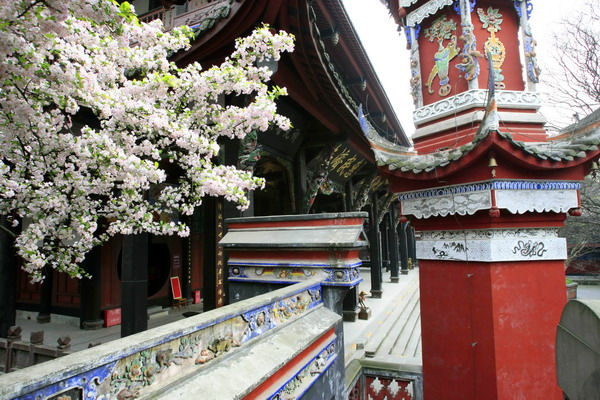 |
|
Erwang Temple, one of Dujianyan's most famous local attractions, is restored to its original glory. [HUANG YIMING / CHINA DAILY] |
Sixty-five schools and 464 hospitals and health centers have been rebuilt. Meanwhile, the city limits have nearly doubled in size, to 35 square kilometers, while the urbanization rate has risen from 30 percent in 2008 to 50 percent today.
In rural areas, more than 400 communities have been built and almost all unsafe village buildings removed.
"We have used this opportunity to integrate rural and urban development," Liu says.
Xiao Fangyu and her neighbors in Shibei village are among those who have benefited. Residents now live in neatly laid-out, four-floor buildings, while a medical center, reading room, garden and playground have also been constructed. "Our life is no different from urban people's," she says.
Xiao was a family planning worker for nearly two decades and lost her 13-year-old daughter in the quake, she has since devoted her time to encouraging bereaved parents to try to have new children. So far, 11 out of 20 couples are trying to have a baby.
Xiao gave birth to a boy in 2010 but still misses her daughter. "If she were still alive, in a few years, I would be helping to pick out a son-in-law," she adds with a sigh.
